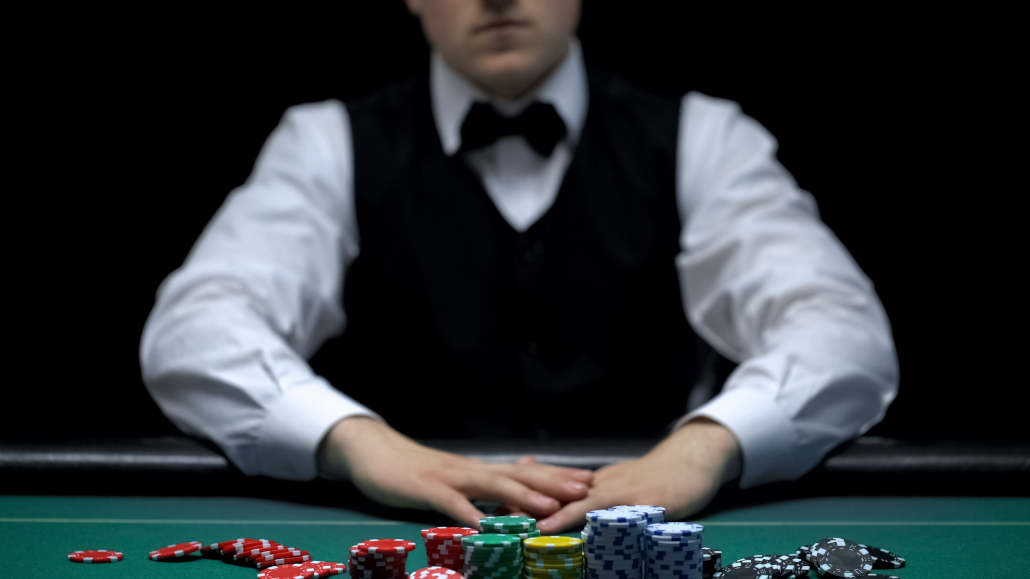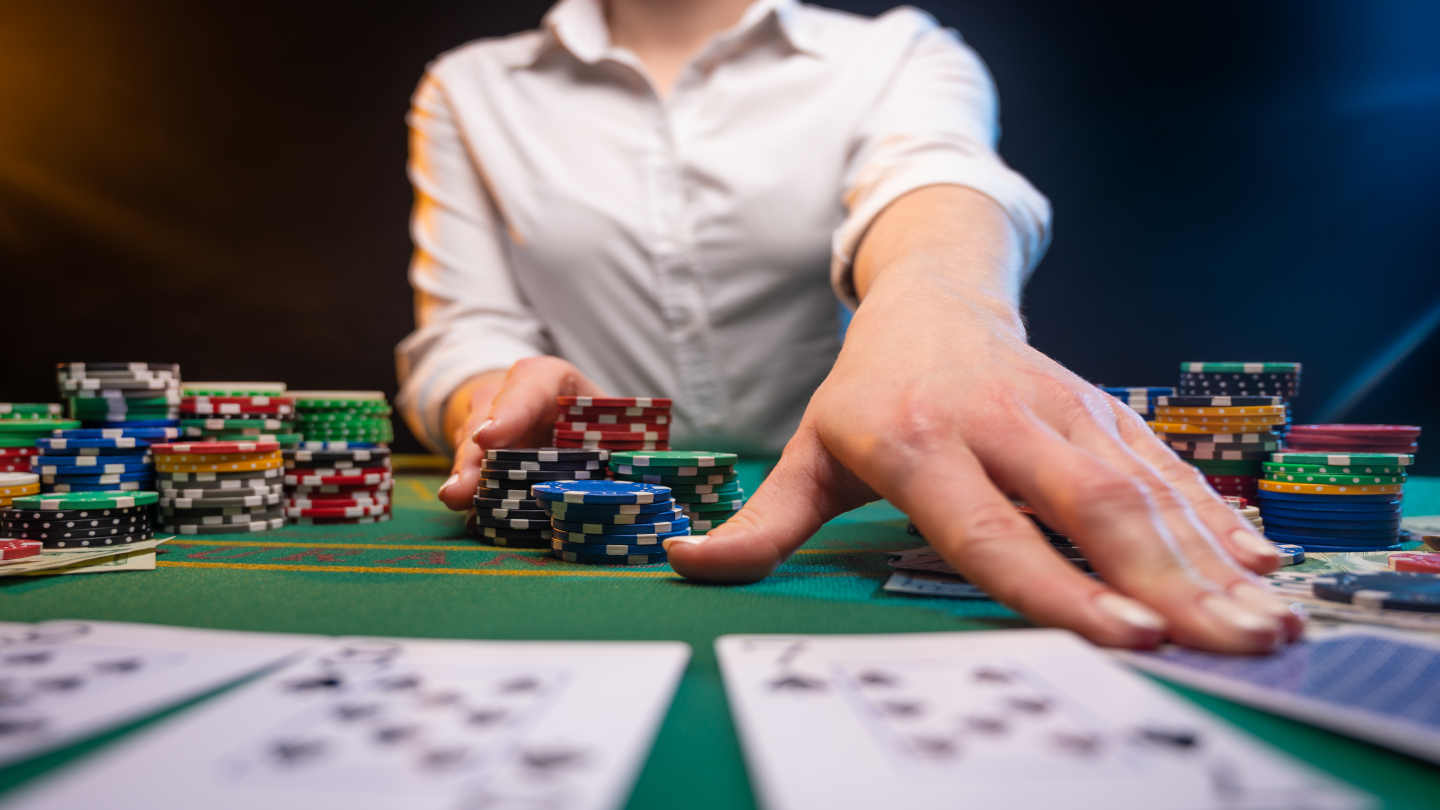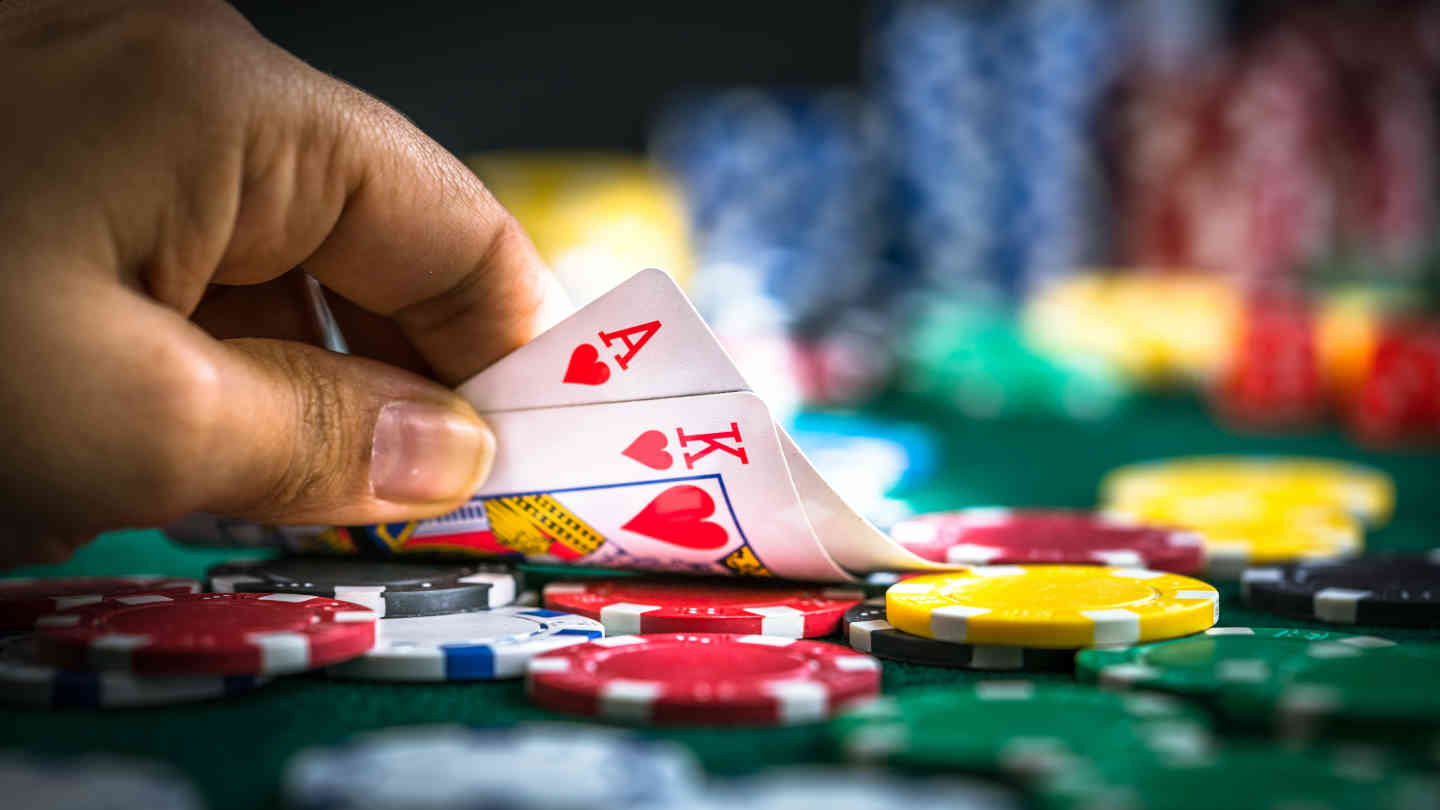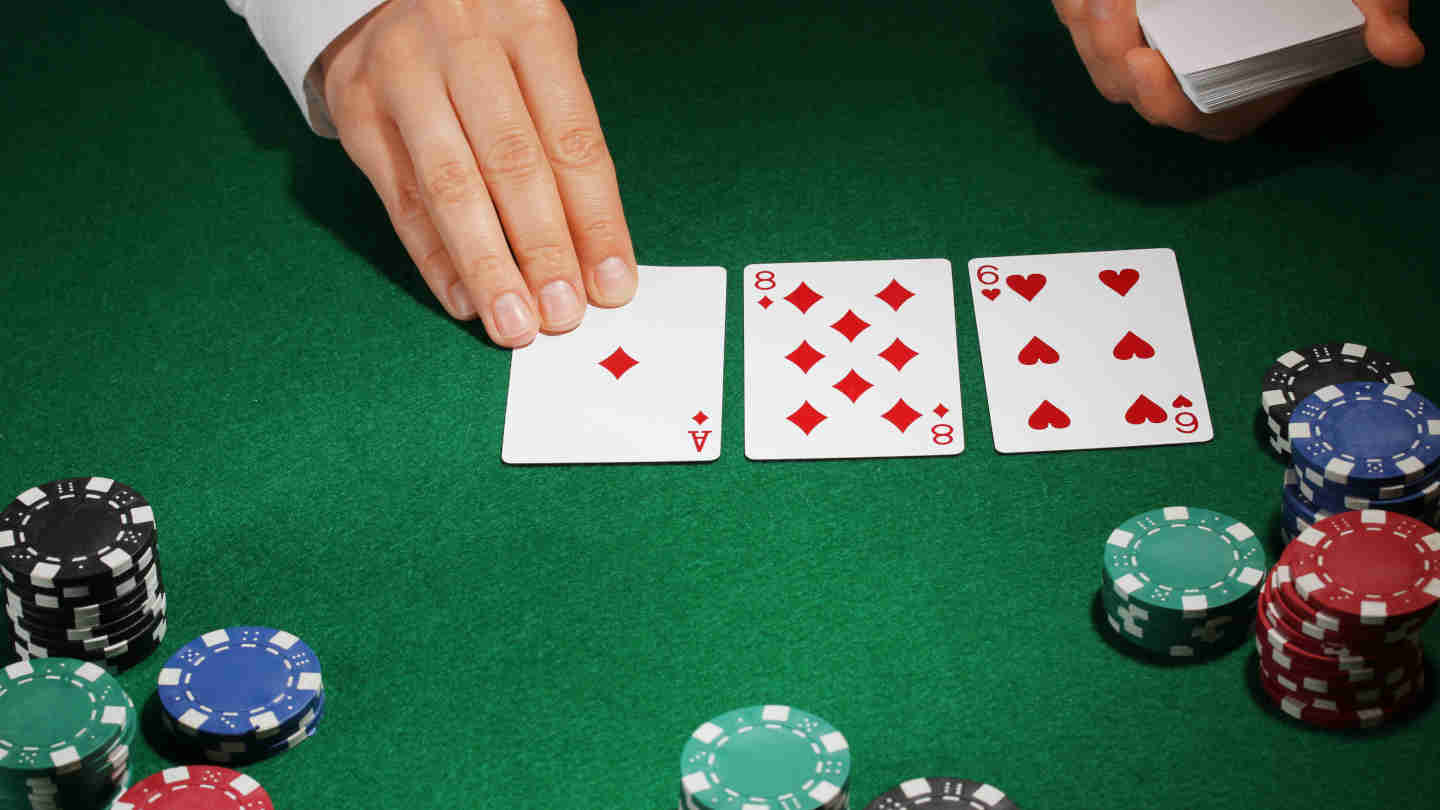Poker Bluffing Basics – Learn How to Bluff and Win More Often

12 minutes
If you mention the term “poker” to a random person, there is a high chance the first thing that will cross their mind is bluffing.
The association is hardly wrong. Bluffing is one of the key components of poker. However, professional poker players approach it in a much different way than you see in movies.
Today, we will be explaining some of the most important components of bluffing such as how to bluff in poker and debunking some of the top myths surrounding bluffing in poker.
What Does Bluffing in Poker Mean?
Before we jump into some more advanced concepts, let’s first explain what is bluffing in poker.
The term bluffing is used to describe an action in which a poker player has made a bet or a raise with the intention of making his opponent or opponents fold a better hand.
In other words, bluffing is the opposite of value betting. When value betting, we are hoping that our opponent will call with a worse hand.
When we are bluffing, we are hoping that our opponent folds a better hand.
For example, if you have A♠K♠, the flop comes A♦7♥2♠, and you bet one-third pot, you are essentially betting for value since you are hoping that other Ax or one pair hands will call you.
Now imagine that instead of A♠K♠ you have J♠10♠. The flop comes A♦7♥2♠ and you bet one-third pot.
In this situation you are essentially bluffing since you are hoping to fold out better poker hands such as Ax, Kx, or small pocket pairs like 5s, 4s or 3s.
What are the Different Types of Bluffs in Poker?

All bluffs in poker can be divided into four main categories:
- Continuation bet bluffs
- Semi bluffs
- No equity bluffs
- Opportunity bluffs
Continuation Bet Bluffs in Poker
Continuation bet bluffing or c-bet bluffing is when a poker player has raised pre-flop and continues his aggression with a bet on the flop even though the flop did not improve his hand.
Continuation bets are one of the most effective tools for bluffing in poker, especially when used in the right situation.
For example, you made a raise or re-raise preflop and the flop comes down with cards that miss your opponent’s range (don’t seem to help his hand), such as one high card and two low cards, or three low cards.
In this situation, a continuation bet can be a good bluff because it puts pressure on your opponent to make a decision.
If your opponent has a weak hand, they are likely to fold to your bet. Even if they have a medium-strength hand, such as a weak pair or a weak draw, they still might fold thinking you have a strong hand.
However, you should not use the continuation bet bluff too often since you may become a target for competent opponents that will float you on the flop and take the pot away on later streets.
It is also important to pay attention to your opponent’s tendencies and play style as some players are more likely to call continuation bets than others.
Finally, the effectiveness of a continuation bet bluff will depend on a variety of factors, including:
- The strength of your opponent’s hand
- The flop texture
- Your opponents play style
It is important to consider all of these factors before making a decision and be prepared to adjust your strategy based on how your opponent reacts.
Semi-Bluffs in Poker
In poker, a semi-bluff is a bet made with a hand that is not yet made but has the potential to improve on future streets. Essentially it is a combination of a bluff and a value bet.
For example, if you have 8♦9♦ and the flop is 6♠7♦A♦, this would be an excellent opportunity for a semi-bluff.
At the moment you don’t have a made hand, but if a ten, a five, or a diamond comes on the turn or the river you will have an extremely strong hand.
With a semi-bluff you can win the pot in two ways:
- You can make your opponent fold the best hand
- Or, you can win the pot by improving on future streets
The important thing to note about semi-bluffs is that they should only be used in situations in which you have a good chance of making a winning hand or making your opponent fold a better hand.
Just like with the continuation bet bluffs, it is important to consider the tendencies of your opponent so that you can adapt if necessary.
No Equity Bluffs in Poker

Bluffing without equity in poker means that you are attempting to win a pot without having a strong hand or any chance of improving on future streets.
For example, if you are betting with 7♠6♦ on a board of A♠K♦5♠2♥, your bet would be classified as a no equity bluff since you have almost no chance of winning the pot on showdown.
With a no-equity bluff, you can only win the pot if your opponent folds and this makes no-equity bluffing extremely risky, which is why a lot of poker players avoid it.
This means that if you are attempting a no-equity bluff you should have a very good reason or you will be burning money over the long run.
Having a read on your opponent and his tendencies is one of the most important factors for this type of bluff. A lot of players will avoid doing it if they don’t have a specific read on their opponent.
Opportunity Bluffs in Poker
An opportunity bluff refers to a type of bluff that players make when they sense an opportunity to take down the pot even if the bluff is not a part of their regular strategy.
These bluffs are based on a belief that came from a specific read or situation that your opponent is weak and can be forced to fold his hand with the right amount of pressure.
This type of a bluff is usually done in situations in which the board is coordinated or where there are many draws possible.
These textures make it easier to represent a strong hand and make your opponent fold.
While this might seem like a pretty straightforward course of action, the truth is that opportunity bluffs require a good understanding of the game, as well as a good understanding of your opponents, their tendencies, and betting patterns.
Making an opportunity bluff based solely on the board without considering other factors can be a costly mistake.
Furthermore, opportunity bluffs should be used sparingly as they can quickly become predictable and lose their effectiveness.
What Is the Goal of Bluffing in Poker?

The main goal of bluffing in poker is to make a profit by deceiving your opponents into believing that your hand is stronger than theirs.
There are two ways that bluffing helps us make money in poker.
The first and the most obvious one is that it allows us to pick the pot with the worse hand. The second way is that it allows us to place value bets when we have the best hand.
The important thing is to have a good balance between value betting and bluffing. If you only bet for value, your opponents will stop calling your bets. If you only bluff, they will always call your bets.
Depending on the stakes, a large majority of the player pool will either lean towards bluffing too much or not bluffing enough. If you become good at reading how the player pool you are in plays, you will have a much easier time making a profit.
Factors to Consider Before Trying to Bluff
There is nothing more exciting in poker than seeing a player deceive his opponent with an exceptionally well-pulled bluff.
While on the surface bluffing might look pretty straightforward, there are a few different factors that poker players take into account before trying to bluff their opponent.
The four main things you should always consider before bluffing in poker are:
- The opponent type
- Your opponent’s range
- Stack-to-pot ratio
- Number of bets needed
How Your Opponent’s Play Style Can Have an Impact on Your Decision to Bluff
When deciding to bluff, your opponent’s play style can have a significant impact on your decision to bluff.
Here are some general guidelines on how to approach bluffing based on different opponents:
- Tight players – tight players mostly play hands that are at top of their range (strong hand) and they avoid getting into marginal spots with the weaker portion of their hand range. Because of this, they are less likely to call your bluff, especially if they have a marginal hand. However, if they do call you one or two times, there is a high chance that they have a strong hand
- Loose players – loose players play a wide range of hands and they don’t mind calling even with the weaker portion of their range. Because of this, if your opponent is a loose player, there is a higher chance that he will call your bluff, so you should probably avoid bluffing loose players
These are only general guidelines as each situation is different. When deciding to bluff you should always consider the specific opponents and the situation, and use your best judgment before making a decision.
For example, some players are tight preflop but loose post-flop, and vice versa. Thus, they might be more inclined to call your preflop bluff than your post-flop bluff, and the other way around.
How Your Opponent’s Range Should Have an Impact on Your Decision to Bluff
When considering whether to bluff or not in poker, one of the most important factors to consider is your opponent’s range. This is the combination of all hands that your opponent could reasonably have based on their actions throughout the hand.
In situations in which you understand your opponent’s range well, the course of action is pretty straightforward.
If your opponent’s range is heavily weighted towards strong hands, bluffing becomes less attractive as it is less likely they’ll fold to your bet.
If your opponent’s range is heavily weighted towards weak hands, then bluffing becomes more attractive since there’s a higher likelihood that they will fold to your bet.
The hard part here, especially for players that are new to poker, is to put your opponent on a range of hands.
But don’t worry, if you put in the work at and away from the table, hand reading will become second nature. You will have an easier time choosing good bluff opportunities based on your opponent’s range.
How the Stack-to-Pot Ratio Should Have an Impact on Your Decision to Bluff
The stack-to-pot ratio is the ratio of the effective stack size (the smallest stack in the hand) to the size of the pot, and it should also have a significant impact on your decision to bluff in poker.
When the pot is larger relative to the effective stacks, the SPR is higher and it becomes more difficult to bluff effectively.
It is generally more challenging to bluff in these situations because the high SPR gives you less leverage.
In other words, you have to use a larger bet size to effectively bluff and even then, depending on the situation, your opponent might have the right price to call.
So, in these spots, it is usually best to play straightforwardly and focus on making value bets rather than trying to bluff.
The same goes the opposite way. If the SPR is low, you will have an easier time bluffing since you have more leverage available. In these scenarios, even a small bet can have a significant impact on the pot relative to the effective size.
Deciding Whether You Should Bluff Based on the Number of Bets Needed
Finally, the fourth big factor you need to include when deciding whether to bluff in a game of poker is the number of bets needed to make your opponent fold.
Generally speaking, the higher number of bets needed to make your opponent fold, the riskier the bluff is, and the less likely it is to succeed.
There are two main reasons why this is true:
- The more bets your opponent calls the higher the chance that he has a good hand
- The longer your opponent is in the hand, the higher the chance that he will improve
So, the more bets you need to make to pull off a bluff, the stronger your hand should be to support it.
This is why semi-bluffs are the best option if you think that you will need two or more bets to make your opponent fold his hand. They give good support to your bluffs, with the chance of improving on future streets.
Top Tips That Will Improve Your Bluffing Game

Just to be clear, there isn’t a secret formula that will help you become better at bluffing overnight. It takes a lot of hard work and experience to become more effective at bluffing in poker.
With this said, there are a few things that you can incorporate into your game that will help you become more effective at bluffing faster.
Think About How Opponents Perceive Your Range
When deciding on whether to bluff or not, a lot of poker players do a pretty good job of factoring in their opponent’s range. However, what they often forget to do is to think about what range their opponent put them in.
The stronger your perceived range looks, the more likely it is for your opponent to fold, and the other way around: the weaker you perceived range looks, the less likely it is for your opponent to fold.
The sooner you start incorporating your perceived range into your decision-making, the sooner you will improve your bluffing game.
Factor in Game Dynamics
Game dynamics can be an extremely subjective factor, but they are still very important to consider when deciding on whether to bluff.
For example, if you have been making a lot of good hands but not going to showdown, your opponents could start thinking that you are too aggressive and like to bluff a lot.
If you have been going to showdowns with a lot of strong hands, they might be thinking that you are a pretty straightforward player who does not bluff a lot.
Sometimes it might be overwhelming to think about all of these things during a hand, but it is a necessary step in becoming better at bluffing.
- Poker Squeeze Play – Which Hands Make the Most Sense for Squeezing? - August 10, 2023
- How to Play Low Pocket Pairs in Texas Hold’em - July 29, 2023
- How to Make Deep Runs in MTTs More Often - July 22, 2023















